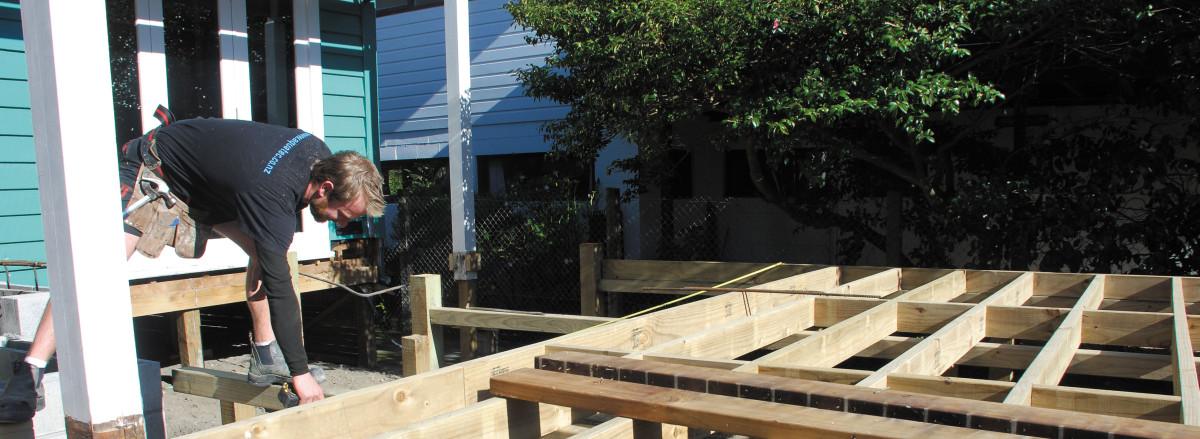Using Schedule 1 exemptions
01 Dec 2015, Featured, LBP & Regulation, Prove Your Know How, Safety

Have you been getting consents for low-risk jobs that don’t require them? MBIE reminds builders to use the expanded list of Schedule 1 exemptions where possible
Passed in November 2013, the Building Amendment Act 2013 expanded the range of work not requiring a building consent. However, despite the list of minor low-risk jobs expanding twice in the past two years, the Rules Reduction Taskforce recently found that it’s often misunderstood and underused.
To ensure Under Construction readers understand what’s included, we’ve included a reminder for this month’s article.
Schedule 1
Schedule 1 was amended with the intent of making exemptions easier to use. A new section (section 42A of the Building Act) was added to the Building Act to clarify:
- What type of building work is exempt from requiring a building consent.
- Who can carry it out.
- What other conditions apply.
The scope of building work covered by Schedule 1 doesn’t vary greatly from the previous version (which was amended in December 2010). However, it has a new numbering system and has been divided into three parts depending on who can carry out the building work.
- Exempt building work is listed in Schedule 1 of the Act, which has been split into three parts to make it easier to navigate.
- The first part lists exempt building work with no limitations on who designs or carries out the work.
- The second part deals with exempt sanitary plumbing and drainlaying, which must be carried out by people authorised under the Plumbers, Gasfitters and Drainlayers Act, with some exceptions.
- The third part covers building work which has been designed or reviewed by a chartered professional engineer.
Exempt – not easy
Part 1 Exempted building work lists work that anyone can carry out. However, just because building work is exempt doesn’t mean the work doesn’t require skill, it just means it doesn’t require a consent, which should speed things up for the homeowner. Also, exempt building work is not restricted building work, so it doesn’t trigger the LBP requirement. However, many homeowners may choose to employ an LBP as exempt work, such as designing a 1.5m-high deck with fancy balustrades or building a 2.99m-high retaining wall, is still relatively complex.
What’s included?
Below are the general headings in Schedule 1’s list of exempt work. If you’re doing any work in the areas listed below, check the full guidance to see if it is exempt or not. Some of it is tricky to decipher so, if you’re unsure, it’s important to get advice from someone with the appropriate building knowledge and expertise, such as your local council.
General
- General repair, maintenance, and replacement
- Territorial and regional authority discretionary exemptions
- Single-storey detached buildings not exceeding 10 square metres in floor area
- Unoccupied detached buildings
- Tents, marquees, and similar lightweight structures
- Pergolas
- Repair or replacement of outbuilding
Existing buildings: additions and alterations
- Windows and exterior doorways in existing dwellings and outbuildings
- Alteration to existing entrance or internal doorway to facilitate access for persons with disabilities
- Interior alterations to existing non-residential building
- Internal walls and doorways in existing building
- Internal linings and finishes in existing dwelling
- Thermal insulation
- Penetrations
- Closing in existing veranda or patio
- Awnings
- Porches and verandas
- Carports
- Shade sails
Other structures
- Retaining walls
- Fences and hoardings
- Dams(excluding large dams)
- Tanks and pools (excluding swimming pools)
- Decks, platforms, bridges, boardwalks, etc
- Signs
- Height-restriction gantries
- Temporary storage stacks
- Private household playground equipment Network utility operators or other similar organisations
- Certain structures owned or controlled by network utility operators or other similar organisations
Demolition
- Demolition of detached building
- Removal of building element
NOTE: All building work, whether exempted or consented, must comply with the Building Code
Guidance
For more details about the Building Amendment Act 2013 and to read the exempt building work for yourself, go to http://www.dbh.govt.nz/building-amendment-act-2013, where you can download a fact sheet or read key information.
Register to earn LBP Points Sign in



